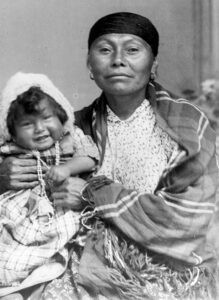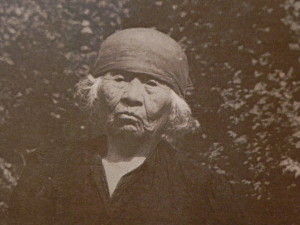For thousands of years, the only occupants of the Pacific Northwest were Indians who lived in large communal longhouses subsisting on fish, shellfish, wild game as well as roots and berries. Whidbey and Camano Islands, as well as the San Juan Islands were occupied by several groups of Coast Salish Indians including Skagit, Snohomish, and a small number of Clallam. With the exception of periodic wars with other Indian tribes, life was relatively quiet for many centuries.
In the late 1700s and early 1800s the Indian population was decimated by disease transmitted through contact with European and American explorers. In some areas diphtheria, smallpox, and measles killed 90 percent of the Indians. By the time non-Indian settlers arrived, some local tribes had populations of only a few hundred and were so depleted they could not effectively resist the intruders.
(The text that follows is from the Langley Chamber of Commerce’s website.)
Snohomish Tribal Villages
While the northern portion of Whidbey Island was home to the Skagit tribe, land from above the head of Holmes Harbor to the southern tip of the island was Snohomish tribal territory. Three permanent Snohomish villages were located on South Whidbey:
D’GWAD’wk or Digwadsh (‘in the basket’ or ‘lots of a certain species of crabs’), was the largest and most important of the three. Surrounded by a cedar palisade, the village had six or seven longhouses, two cemeteries, and a potlatch house visited on occasion by people from the Duwamish and Suquamish tribes. It was abandoned about 1870 when the residents relocated to Tulalip.TSEHT-skluhks (‘ragged nose’), was located at Sandy Point, east of downtown what is now Langley. This village had a potlatch house and clam beds which drew visitors from as far away as the Samish. Captain George Vancouver noted in his journals that Master Joseph Whidbey (the island’s namesake), on their visit in 1792 saw two hundred people at this location. SHET’LH-shet-lhuts (‘burnt leaves’), on the west side of South Whidbey Island, at Bush Point in the Freeland area, had three longhouses, a potlatch house, and a cemetery.
 Across Saratoga Passage on Camano Island was WHESH-ud(splashing water), another Snohomish village location. Residents atTSEHT-skluhks told of witnessing the earthquake and great slide of 1825 when the southern tip of Camano Island slid into Possession Sound. After this, WHESH-ud was used mainly for seasonal clamming.
Across Saratoga Passage on Camano Island was WHESH-ud(splashing water), another Snohomish village location. Residents atTSEHT-skluhks told of witnessing the earthquake and great slide of 1825 when the southern tip of Camano Island slid into Possession Sound. After this, WHESH-ud was used mainly for seasonal clamming.
For additional information on the coastal tribes who lived in the region, we suggest you visit the Hibulb Cultural Center north of Everett near Marysville, on the Tulalip Reservation.



